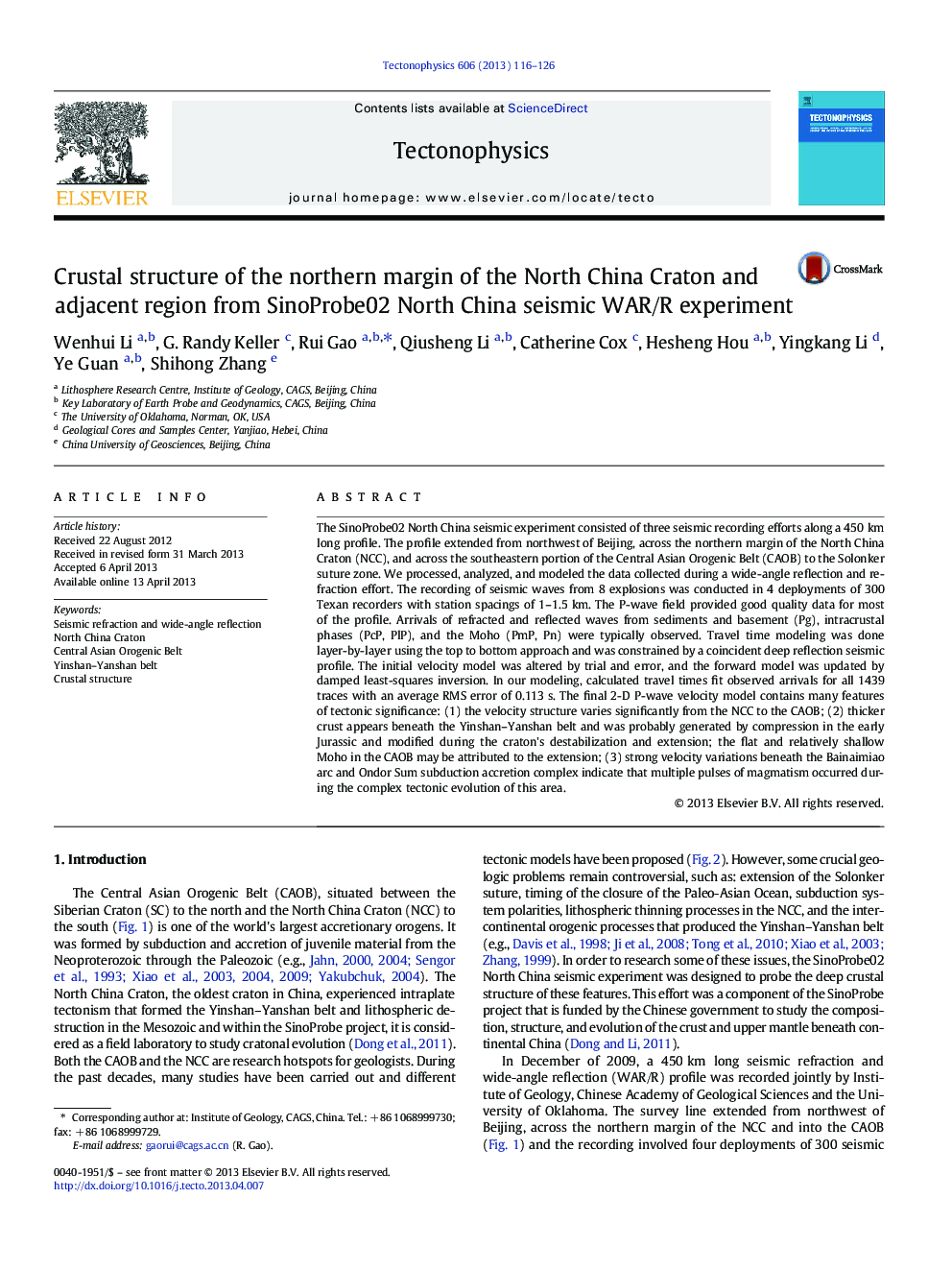| Article ID | Journal | Published Year | Pages | File Type |
|---|---|---|---|---|
| 6434120 | Tectonophysics | 2013 | 11 Pages |
â¢We processed, analyzed, and modeled the WAR/R data that we collected in 2009.â¢The velocity structure varies significantly from the NCC to the CAOB.â¢Thicker crust appears beneath the Yinshan-Yanshan belt.â¢Strong velocity variations appear beneath the Bainaimiao and Ondor Sum area.
The SinoProbe02 North China seismic experiment consisted of three seismic recording efforts along a 450Â km long profile. The profile extended from northwest of Beijing, across the northern margin of the North China Craton (NCC), and across the southeastern portion of the Central Asian Orogenic Belt (CAOB) to the Solonker suture zone. We processed, analyzed, and modeled the data collected during a wide-angle reflection and refraction effort. The recording of seismic waves from 8 explosions was conducted in 4 deployments of 300 Texan recorders with station spacings of 1-1.5Â km. The P-wave field provided good quality data for most of the profile. Arrivals of refracted and reflected waves from sediments and basement (Pg), intracrustal phases (PcP, PlP), and the Moho (PmP, Pn) were typically observed. Travel time modeling was done layer-by-layer using the top to bottom approach and was constrained by a coincident deep reflection seismic profile. The initial velocity model was altered by trial and error, and the forward model was updated by damped least-squares inversion. In our modeling, calculated travel times fit observed arrivals for all 1439 traces with an average RMS error of 0.113Â s. The final 2-D P-wave velocity model contains many features of tectonic significance: (1) the velocity structure varies significantly from the NCC to the CAOB; (2) thicker crust appears beneath the Yinshan-Yanshan belt and was probably generated by compression in the early Jurassic and modified during the craton's destabilization and extension; the flat and relatively shallow Moho in the CAOB may be attributed to the extension; (3) strong velocity variations beneath the Bainaimiao arc and Ondor Sum subduction accretion complex indicate that multiple pulses of magmatism occurred during the complex tectonic evolution of this area.
